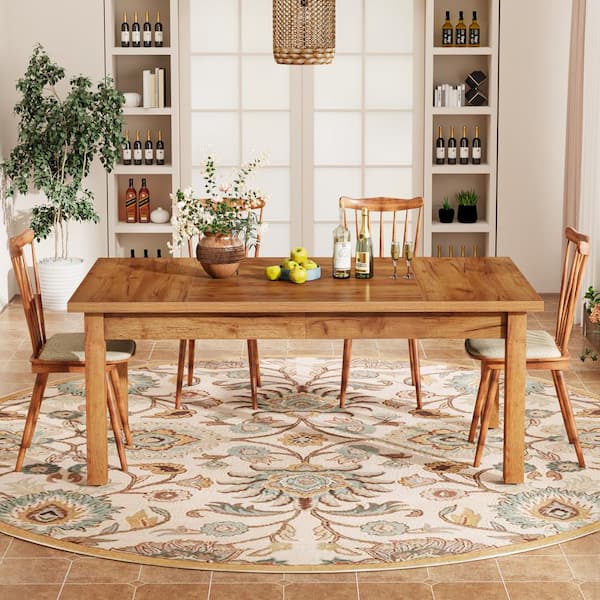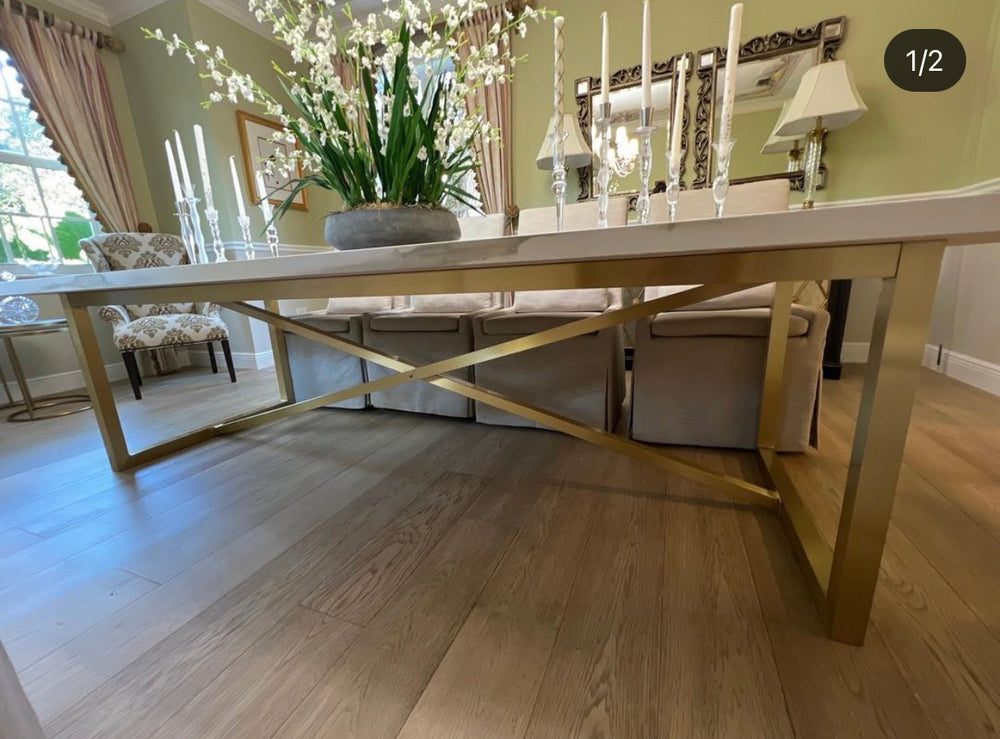Eating Table Legs: How to Select the most effective Styles for Your Space
Selecting the appropriate eating table legs is critical for both aesthetic and functional consistency in your dining area. Whether your area boasts a streamlined, contemporary ambiance or leans in the direction of a more conventional atmosphere, the design of the legs can considerably affect the overall look. Tapered legs emanate modern elegance, while transformed legs supply a nod to classic appeal. Beyond design, the material-- be it cozy wood or sleek metal-- plays an essential function in establishing the tone. Yet how do you guarantee these aspects match your existing style while providing the necessary security? The solution lies in a well balanced approach.
Evaluating Your Dining Room Design
How do you determine the finest table legs for your space? The solution begins with a complete analysis of your eating room style. A natural layout makes certain that your table legs improve the general visual instead of encounter existing components. Beginning by observing the building functions of your dining-room. Exist noticeable characteristics such as subjected beams, intricate moldings, or minimal lines? These details typically dictate whether a conventional, rustic, contemporary, or commercial design is most appropriate.
Following, take into consideration the existing furnishings and style. The products, colors, and appearances within the area play an essential duty. For example, an eating room with sleek, contemporary chairs and metal accents might benefit from simple, structured table legs. Alternatively, a room filled up with classic pieces and rich textiles might call for luxuriant, sculpted legs.
Lights likewise affects assumption. Natural light can accentuate particular products and coatings, while fabricated illumination can highlight different aspects. Last but not least, represent the area's scale and percentages. Large, open eating rooms can accommodate larger, extra significant legs, whereas smaller sized areas require even more fragile, unobtrusive layouts. By very carefully examining these variables, you can select dining table legs that sympathetically blend with your eating area's design.
Popular Leg Styles Discussed

One prevalent design is the tapered leg, renowned for its smooth, modern appearance. This leg narrows from leading to base, providing a minimalist allure ideal for contemporary and Scandinavian insides. Next off, the turned leg attributes complex spindle-like styles, commonly discovered in standard and farmhouse settings. These legs include a touch of craftsmanship and elegance.
Cabriole legs, with their distinct curves, are associated with French Provincial and Queen Anne furnishings. Their stylish, flowing lines bring a feeling of refinement and historic beauty (dining room table legs). For those preferring a durable and simple layout, square legs give strong assistance and a clean, geometric look, perfect for commercial or minimal areas
Last but not least, barrette legs supply a retro, mid-century contemporary vibe. Made from steel, these legs are both light-weight and solid, adding a distinct visual contrast to wooden tabletops. Understanding these styles will certainly guide you in picking table legs that improve your room's visual and performance.
Product Considerations

Wood is a traditional alternative, recognized for its heat and convenience. It can be found in various varieties such as oak, walnut, and maple, each offering distinct grain patterns and shades. Metal legs, often made from stainless steel, iron, or light weight aluminum, give a contemporary and commercial appearance while guaranteeing durable support. They are usually extra resistant to damage, making them a resilient choice.

Various other products like bamboo or rattan use green choices, bringing a natural and unwinded ambiance to the dining area. Each product has its advantages and disadvantages, and the finest option will certainly depend on your details needs and preferences.
Balancing Appearances and Performance
Achieving the excellent equilibrium in between aesthetics and functionality is important when selecting table legs. While the visual allure of table legs can significantly improve the general setting of a dining room, their useful elements can not be forgotten. The design of the legs must harmonize with the room's decor, yet they must additionally provide sufficient assistance and stability for the table.
Think about the architectural design of your room. Sleek, contemporary insides might gain from minimal, metal legs that provide a clean and unobtrusive appearance. On the various other hand, conventional setups typically match transformed or sculpted wood legs that add a touch of beauty and class.
Functionality incorporates the stability and toughness of the legs. Trestle legs, known for their effectiveness, can provide strong support for bigger tables, making them excellent for family members or regular performers. Conversely, anonymous pedestal legs can use more legroom and adaptability, permitting much better seating arrangements
Furthermore, the height and positioning of the legs are crucial for comfortable eating. Legs positioned also far internal might impede seats, while those as well close to the side can limit movement. Thus, thoughtful consideration here of both visual and practical elements is paramount for an optimum dining experience.
Personalization and DIY Options
Personalization opens up a realm of possibilities for developing table legs that are distinctly tailored to your taste and needs. Whether you seek a typical, contemporary, or eclectic look, personalized choices permit you to choose the specific materials, finishes, and designs that finest enhance your area. Customizable alternatives array from picking the type of wood-- such as oak, maple, or walnut-- to choosing steel surfaces like brushed nickel or antique brass. Furthermore, particular style components, such as transformed legs, tapered forms, or elaborate makings, can be integrated to reflect your design.
For those inclined towards do-it-yourself (DIY) projects, developing personalized table legs supplies both a gratifying experience and the possibility to achieve a bespoke visual. DIY enthusiasts can source raw materials and utilize woodworking or metalworking devices to craft legs that meet exact specs. Furthermore, countless on the internet tutorials Your Domain Name and workshops offer advice, making the procedure more available for novices.
Inevitably, whether going with specialist modification or starting a do it yourself venture, the capacity to tailor table legs makes sure that the last item integrates with your indoor layout vision, enhancing both performance and visual appeal.
Conclusion
Selecting the appropriate eating table legs needs careful factor to consider of the total style of the dining-room, including existing architectural functions and furniture. Understanding preferred leg styles and material options is crucial for attaining a harmonious aesthetic. Balancing aesthetics with capability makes sure stability and boosts the eating experience. Personalization choices further allow for a customized layout. Eventually, the selected table legs must enhance the decoration, giving both aesthetic appeal and sensible support.